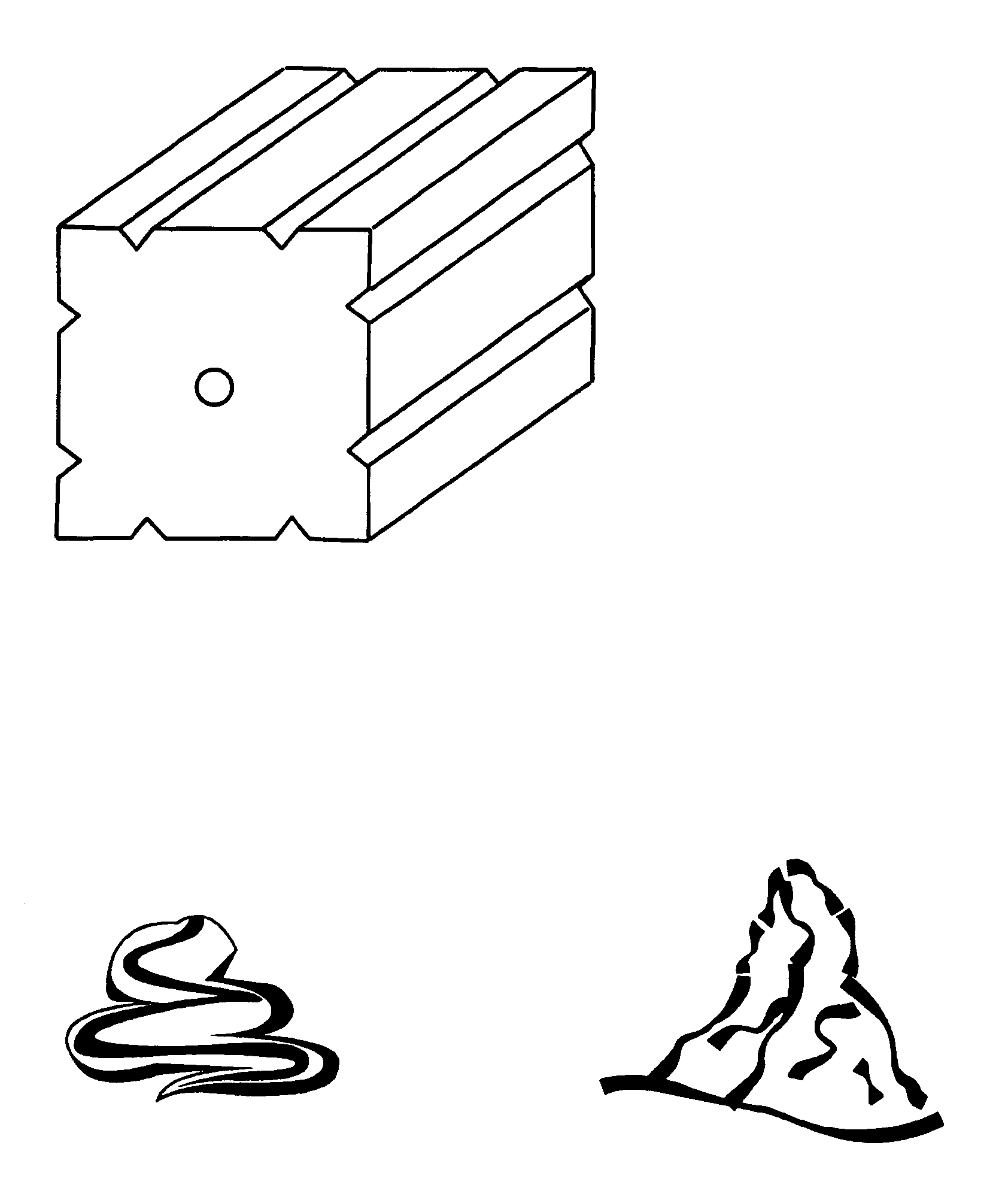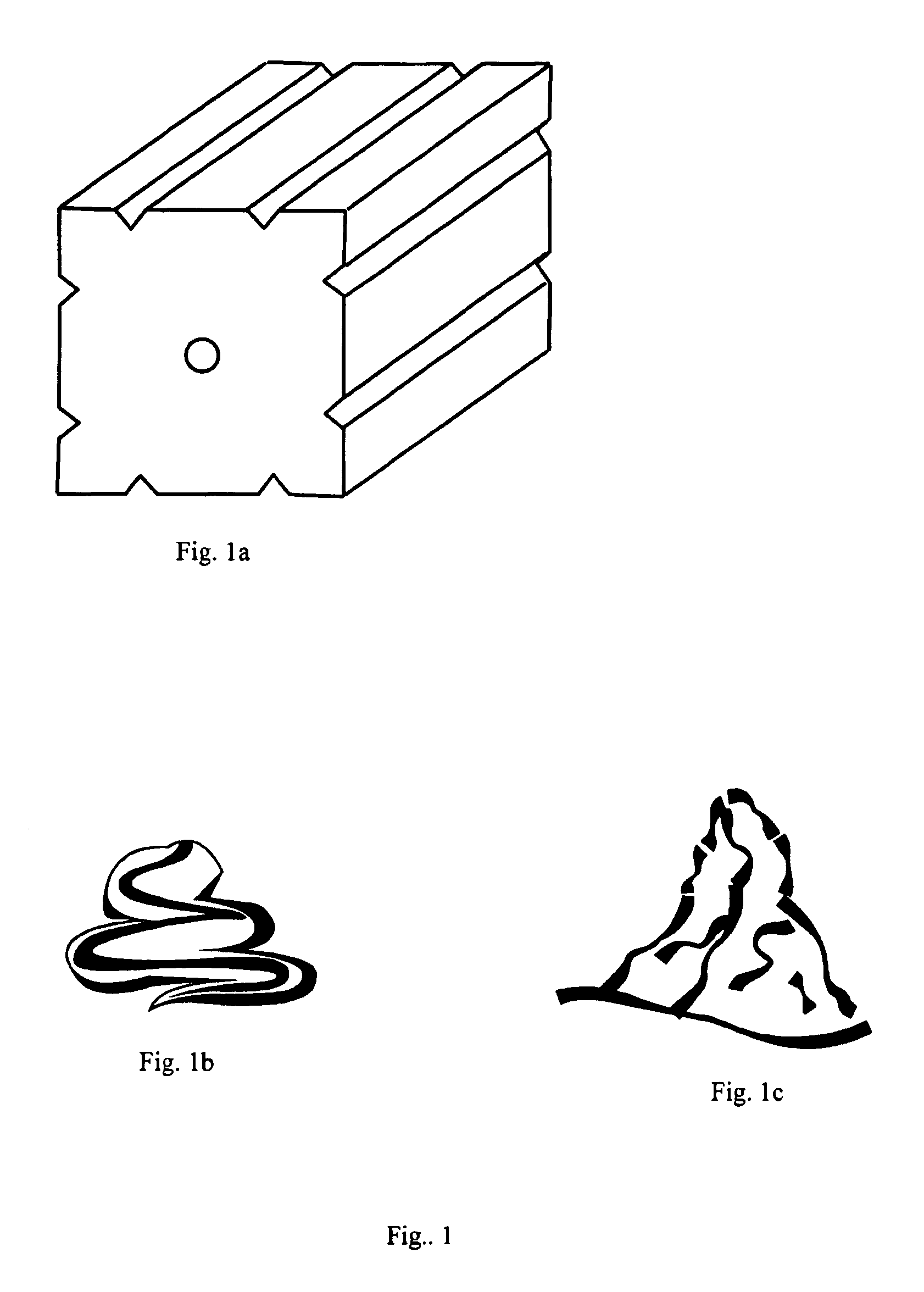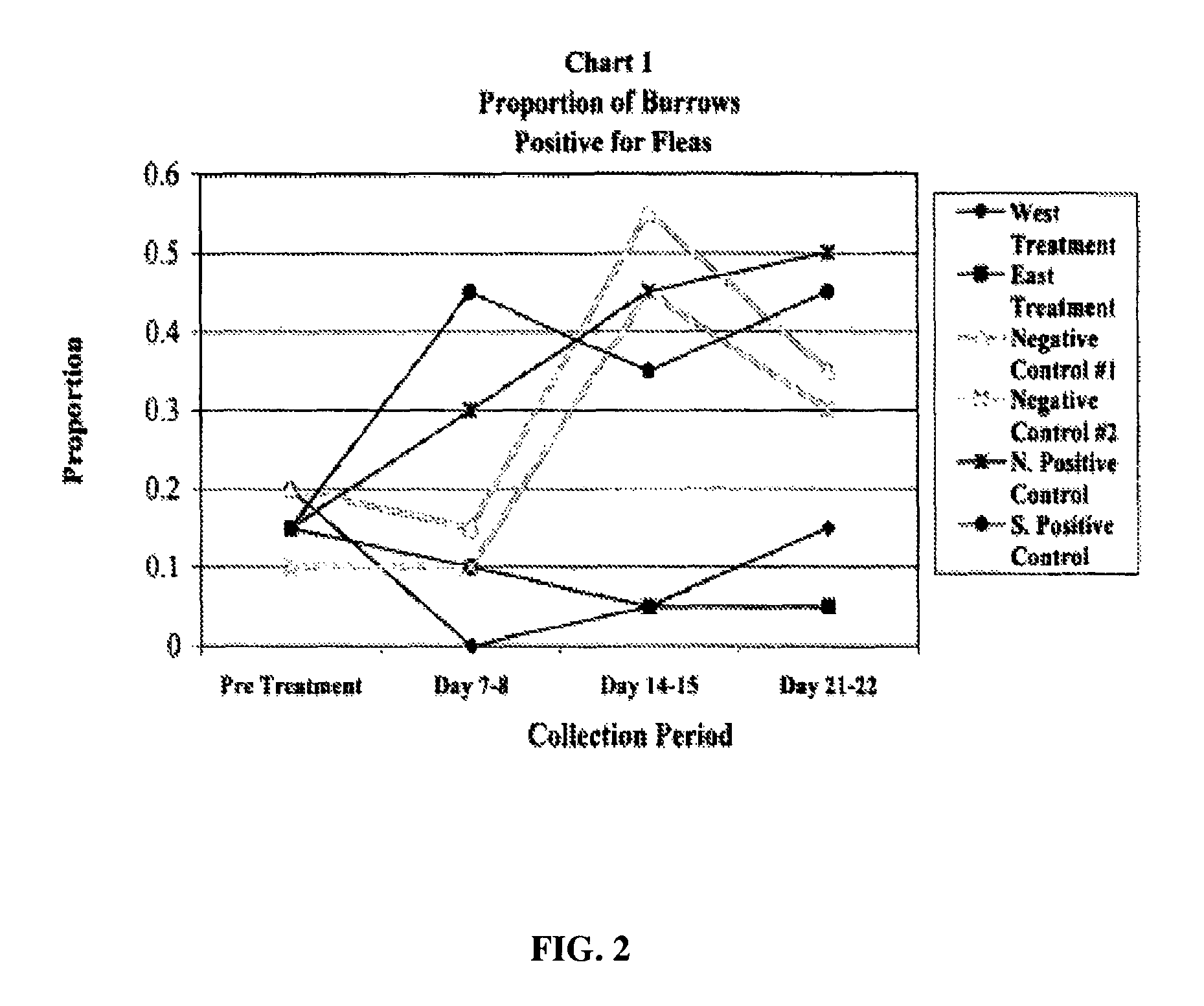Pest control methods
a technology for pests and methods, applied in the field of pest control, to achieve the effect of enhancing the efficacy of rodenticides, cost and labor savings, and enhancing the efficacy of insecticides
- Summary
- Abstract
- Description
- Claims
- Application Information
AI Technical Summary
Benefits of technology
Problems solved by technology
Method used
Image
Examples
study 2a
omposition Containing 485-ppm Fipronil Diet was Formulated and Exposed to Laboratory Mice for 48 Hours.
[0019]The diet was exposed to laboratory mice for 48 hours. Ticks were applied directly to the mice. The results are as follows.
[0020]
TABLE 3The Efficacy of Systemic Fipronil (485 ppm) on Larval Ticks(I. scapularis) Fed on Laboratory MicePresen-tationDietRemovalcom-DietTotal DietpositioncompositioncompositionNumberMouseWeightWeightConsumedof TicksRepleteNumberSex(g)(g)(g)AppliedTicks1M135.0127.17.97002M126.6117.39.37003M129.8118.211.67004M141.8129.812.07005F141.7134.47.37006F131.4116.115.37007F139.1130.88.37008F137.1125.112.0700Average:10.4Total:0C1F129.8116.613.27041 C2F129.6114.615.07032 C3M137.8125.212.67047 C4M135.5124.111.47042 Average:13.1Total:162
[0021]These data indicate that diet compositions containing fipronil formulated at 485 mg / kg prevents ticks from feeding to repletion. Fipronil diets may be formulated at 0.001% -1.5% (including the range of 0.01% -0.15%) using die...
study 2b
ted Field Study on Rock Squirrels Using Rodent Diet Composition Formulated at 0.0025% Diphacinone with 0.025% Imidacloprid.
[0049]The activity index was observed mortality. Results of the study are found in Table 7.
[0050]
TABLE 7Adverse Observations and Efficacy# Dead / AdverseGroup# Tested% EfficacyObservationsTreatment13 / 1872.2%HY, H, M, FDHY = Hyporeactive,H = Hemorrhaging,M = Moribund,FD = Found Dead
[0051]In summary, Diphacinone Rodent Diet Composition (0.0025% Diphacinone) was offered to 18 rock squirrels in a simulated field study. Overall efficacy was 72.2% after 29 days of exposure. This result exceeds the USEPA criterion of 70%.
study 3b
Study on California Ground Squirrels Using Rodent Diet Composition Formulated at 0.0025% Diphacinone with 0.025% Imidacloprid was Performed.
[0052]Activity indices were visual count and closed burrow count. EPA guidelines require a 70% reduction in activity. Results of the study are found in Table 8.
[0053]
TABLE 8Efficacy of Diet compositions to Control California Ground SquirrelsIndexTreatment PlotVisualClosed BurrowEast Treatment185.8%74.6%West Treatment190.9%88.4%1Control data was pooled for each treatment plot and efficacy calculatedwith the following formula:1-Post-TreatmentCensusIndex(Treatment)Pre-TreatmentCensusIndex(Treatment)×Pre-TreatmentCensusIndex(Control)Post-TreatmentCensusIndex(Control)×100
Controlling Wildlife Fleas Using Imidacloprid in Uncontrolled Settings
Study 1: Decreasing the Prevalence of Flea Infestation on California Ground Squirrels (Spermophilus beecheyi) Using a Rodent Diet Composition Containing 250 ppm Imidacloprid—A Field Trial:
[0...
PUM
| Property | Measurement | Unit |
|---|---|---|
| humidity | aaaaa | aaaaa |
| humidity | aaaaa | aaaaa |
| area | aaaaa | aaaaa |
Abstract
Description
Claims
Application Information
 Login to View More
Login to View More - R&D
- Intellectual Property
- Life Sciences
- Materials
- Tech Scout
- Unparalleled Data Quality
- Higher Quality Content
- 60% Fewer Hallucinations
Browse by: Latest US Patents, China's latest patents, Technical Efficacy Thesaurus, Application Domain, Technology Topic, Popular Technical Reports.
© 2025 PatSnap. All rights reserved.Legal|Privacy policy|Modern Slavery Act Transparency Statement|Sitemap|About US| Contact US: help@patsnap.com



